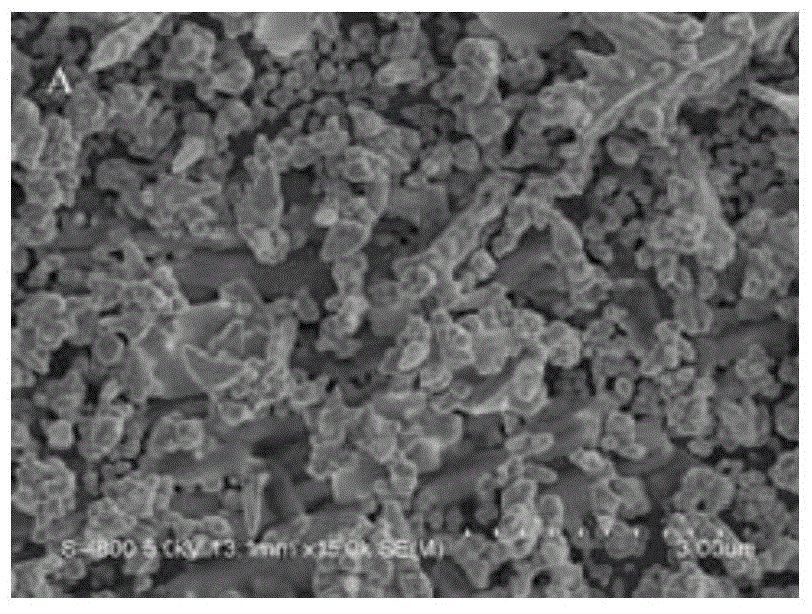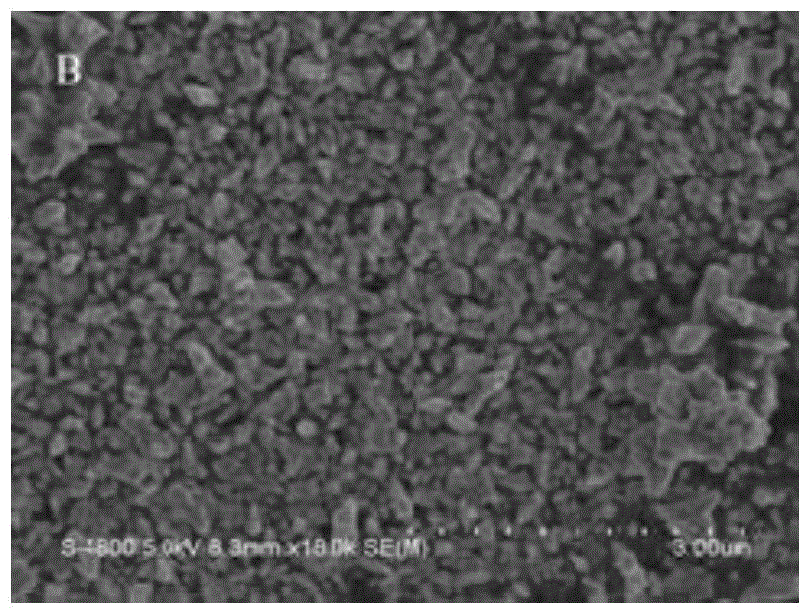Imprinted sensor based on gold nanoparticles, preparation method and application thereof
A technology of gold nanoparticles and sensors, which is applied in the field of imprinted sensors based on gold nanoparticles and its preparation, can solve the problems of food safety issues, low detection sensitivity, toxicity, etc., and achieve the effect of excellent selective recognition ability
- Summary
- Abstract
- Description
- Claims
- Application Information
AI Technical Summary
Problems solved by technology
Method used
Image
Examples
preparation example Construction
[0032] The invention provides a method for preparing an imprinted sensor based on gold nanoparticles, the method comprising the following steps:
[0033] 1) Place the target electrode in a 2 SO 4 and HAuCl 4 Electrochemical deposition is carried out in the first mixed solution to prepare the procedure of gold nano-modified electrode;
[0034] 2) In the presence of a buffer solution, the gold nano-modified electrode is placed in a second mixed solution containing o-phenylenediamine and 2,4-dichlorophenoxyacetic acid and scanned by cyclic voltammetry to prepare a polymer The process of modifying the electrode with the film;
[0035] 3) placing the polymer membrane modified electrode in ethanol or an ethanol solution for eluting to prepare an imprinted sensor based on gold nanoparticles;
[0036] Wherein, the target electrode is a glassy carbon electrode or an ITO electrode.
[0037] like figure 1 As shown, the present invention first contains Na on the target electrode 2 ...
Embodiment 1
[0053] 1) Pretreatment of glassy carbon electrodes
[0054] The surface of the glassy carbon electrode was polished with alumina powder with a particle size of 0.3 μm, and ultrasonically treated in ethanol and secondary aqueous solution. Then put the treated glassy carbon electrode into 0.6mmol / L [Fe(CN) 6 ] 3- / [Fe(CN) 6 ] 4- CV detection was carried out in the solution so that the peak difference ΔEp between the oxidation peak and the reduction peak was 75mV, and then dried at 25°C.
[0055] 2) Preparation of gold nano-modified electrodes
[0056] Put the pretreated glassy carbon electrode into 0.1mol / L Na 2 SO 4 and 30mmol / L of HAuCl 4 In the first mixed solution, the electrodeposition was performed under the condition of -0.6V for 600s to obtain a gold nanoparticle modified electrode.
[0057] EDS detection was performed on the gold nano-modified electrode, and the results were as follows: Figure 16 shown by Figure 16 It can be seen that the gold nano-modified ...
Embodiment 2
[0065] According to the method of Example 1, the difference is that the electrochemical deposition time is respectively 400s, 500s, 700s, 800s and 900s to make MIP / Au / GCE, then the MIP / Au in Example 1 and Example 2 / GCE in 0.6mmol / L [Fe(CN) 6 ] 3- / [Fe(CN) 6 ] 4- solution for 1.5 x 10 -8 mol / L 2,4-D solution for DPV detection, wherein the detection potential is -0.2 ~ 0.5V, the detection results are as follows Figure 7 shown by Figure 7 It is known that the MIP / Au / GCE prepared at the electrochemical deposition time of 600s is the most sensitive to 2,4-D.
PUM
| Property | Measurement | Unit |
|---|---|---|
| Volume | aaaaa | aaaaa |
| Particle size | aaaaa | aaaaa |
Abstract
Description
Claims
Application Information
 Login to View More
Login to View More - R&D
- Intellectual Property
- Life Sciences
- Materials
- Tech Scout
- Unparalleled Data Quality
- Higher Quality Content
- 60% Fewer Hallucinations
Browse by: Latest US Patents, China's latest patents, Technical Efficacy Thesaurus, Application Domain, Technology Topic, Popular Technical Reports.
© 2025 PatSnap. All rights reserved.Legal|Privacy policy|Modern Slavery Act Transparency Statement|Sitemap|About US| Contact US: help@patsnap.com



